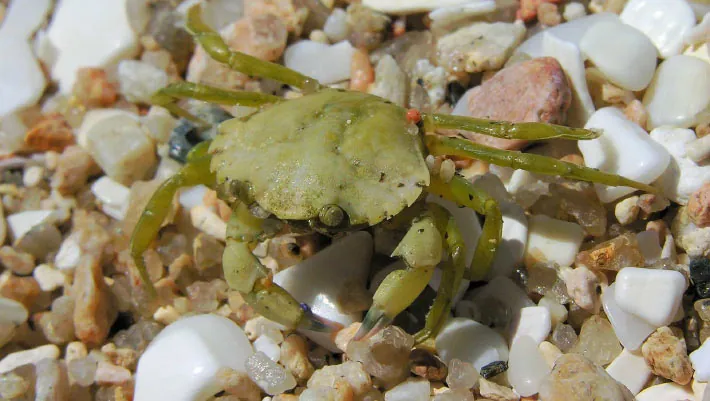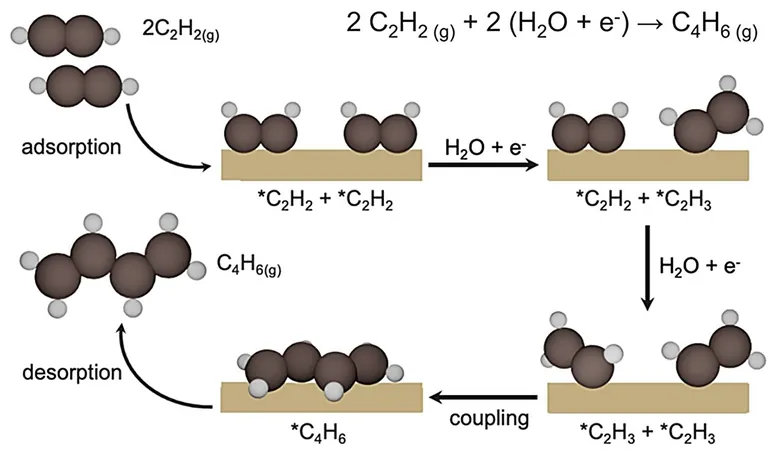
Are Shore Crabs Capable of Feeling Pain? Groundbreaking Study Reveals Nociceptive Responses!
2024-11-26
Author: Siti
A startling new study sheds light on a long-debated question in the scientific community: do crustaceans, like shore crabs, feel pain? Researchers from the University of Gothenburg, along with Portuguese and Swedish institutions, have demonstrated that these creatures exhibit nociceptive responses, indicating a capacity for pain perception.
Nociceptors, essential receptors that detect harmful stimuli, are crucial for sending pain signals from the body to the brain. Understanding the pain experience in crustaceans is vital for their welfare, particularly given the role of species like Carcinus maenas in both scientific research and aquaculture.
In this pioneering research, scientists examined the central nervous system responses of shore crabs to two forms of potentially harmful stimuli—mechanical pressure and chemical exposure, particularly acetic acid (the main component of vinegar). Astonishingly, their findings revealed that 32 different areas on a crab’s body responded to these harmful stimuli, showing signs of both nociceptive and mechanical sensitivity.
These findings are particularly significant in light of previous evidence suggesting that decapod crustaceans—lobsters, crabs, prawns, crayfish, and shrimps—might have the capacity to experience pain. While behavioral signs of pain have been seen, prior studies lacked the crucial electrophysiological evidence that could substantiate these claims.
Dr. Lynne Sneddon, a leading zoophysiologist involved in the study, emphasized the importance of these conclusions: "We need to find less painful ways to kill shellfish if we are to continue eating them. Now we have scientific evidence that they both experience and react to pain."
During their investigation, the researchers focused on the soft tissues of shore crabs, known for their extensive distribution and established physiology. They conducted electrophysiological recordings on brain activity, observing significant increases when the crabs were subjected to painful stimuli.
Ph.D. student Eleftherios Kasiouras remarked, "The crab has some kind of pain receptors in its soft tissues, as evidenced by increased brain activity when exposed to potentially painful chemicals." This holds critical implications for how we understand and interact with these marine creatures.
Dr. Sneddon underscores the urgent need to reevaluate current practices: "It is shocking that, unlike mammals, crustaceans can be cut up alive. We must pursue more humane methodologies in handling and processing these animals."
The researchers suggest further studies to explore the pain capabilities in other crustacean species, asserting a likelihood that shrimps, crayfish, and lobsters also possess similar nociceptive systems, enabling them to process harmful stimuli effectively.
As this revelatory study was published on October 22, 2024, in the journal Biology, it not only opens new discussions on the ethics of harvesting crustaceans but also calls for a paradigm shift in how we consider animal welfare in aquaculture and culinary practices.
In an era where the scientific community is increasingly prioritizing humane treatment of all creatures, this research affirms the notion that all animals, including crustaceans, deserve compassionate consideration in our interactions with them.


 Brasil (PT)
Brasil (PT)
 Canada (EN)
Canada (EN)
 Chile (ES)
Chile (ES)
 España (ES)
España (ES)
 France (FR)
France (FR)
 Hong Kong (EN)
Hong Kong (EN)
 Italia (IT)
Italia (IT)
 日本 (JA)
日本 (JA)
 Magyarország (HU)
Magyarország (HU)
 Norge (NO)
Norge (NO)
 Polska (PL)
Polska (PL)
 Schweiz (DE)
Schweiz (DE)
 Singapore (EN)
Singapore (EN)
 Sverige (SV)
Sverige (SV)
 Suomi (FI)
Suomi (FI)
 Türkiye (TR)
Türkiye (TR)